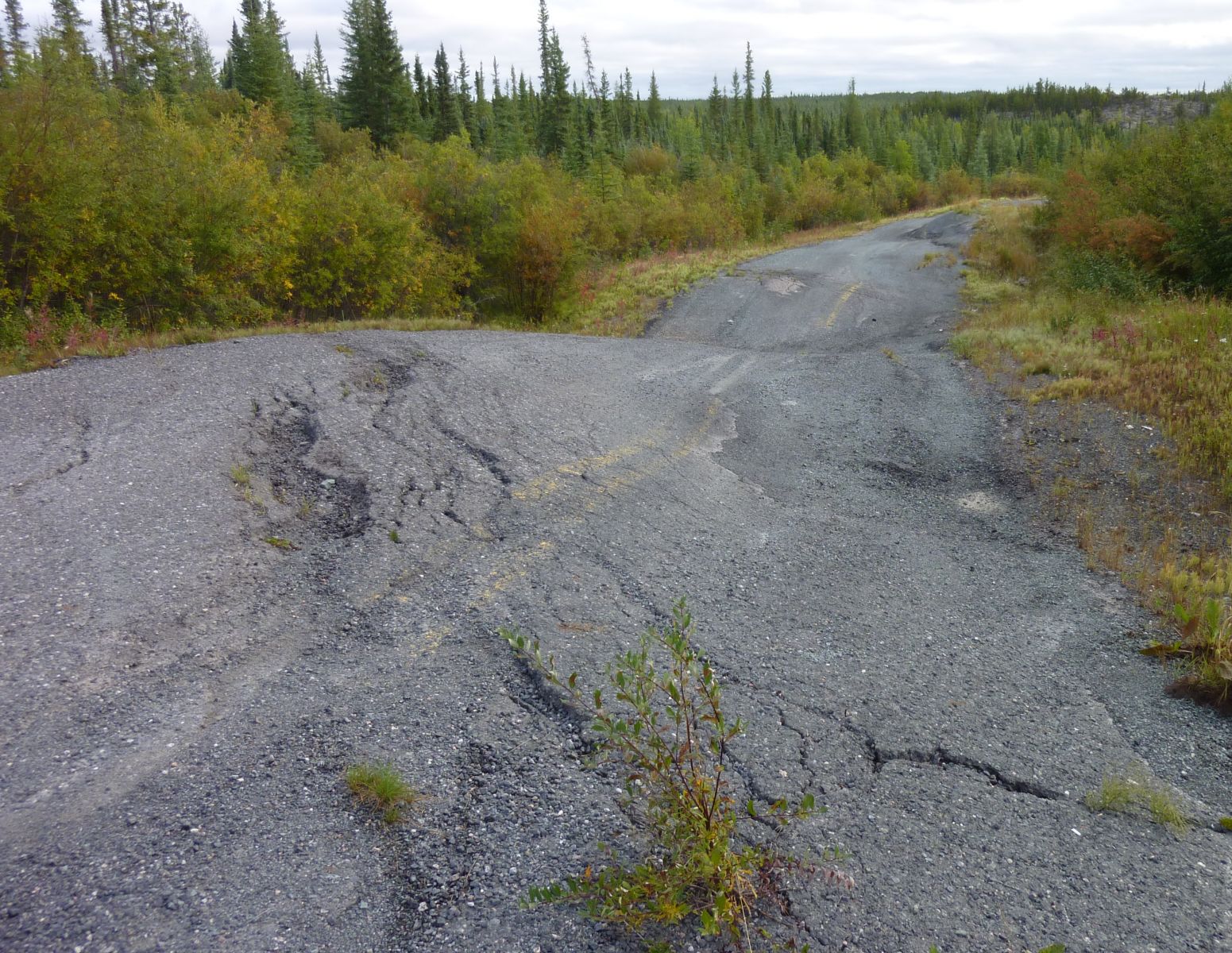Permafrost, Ice and Snow

Satellites offer a unique and valuable perspective on Canada’s extensive cryosphere. Within the Canada Centre for Mapping and Earth Observation (CCMEO), methods capable of monitoring the seasonal and geographical variability of lake and river ice, permafrost and snow are actively being developed.
Techniques developed at CCMEO are now being used across Canada to monitor the timing and related dynamics of lake and river ice freeze-up and break-up. This information supports the safe use of seasonal ice roads, improves flood and weather prediction and secures nearby infrastructure.

Larger image A deformed, abandoned highway near Yellowknife in Northwest Territories. The construction and maintenance of infrastructure in Canada’s North (e.g. roads, pipelines) must contend with the surface deformation related to the seasonal freeze and thaw of permafrost. This thawing may trigger landslides that affect energy transportation corridors and adjacent watersheds, as illustrated in this aerial photograph taken near Fort McPherson, NWT. Photo by R. Fraser, NRCan. # 2014-038
Text Version - Figure 1
Mapping and Monitoring Lake Ice using SAR Satellites PDF, KB
In Canada’s North, people reside, work and travel on terrain often underlain by frozen soil or permafrost. The seasonal freeze and thaw of the surface active layer leads to subsidence and heave, which represents a significant challenge to the design and maintenance of northern infrastructure. CCMEO scientists are developing methods to use satellite SAR data to measure the stability of terrain in Canada’s permafrost zones.
InSAR Measurements of Terrain Stability in Canada's North PDF, KB
CCMEO has also developed techniques to monitor snow cover extent and properties from visible/infrared satellites. Information on snow cover extent is required for climate and weather models, water quantity modelling, estimating hydroelectricity potential, water quality and flood forecast models, crop and forest management including drought and forest fire danger assessments, habitat suitability assessments, transportation planning, and tourism.
Page details
- Date modified: